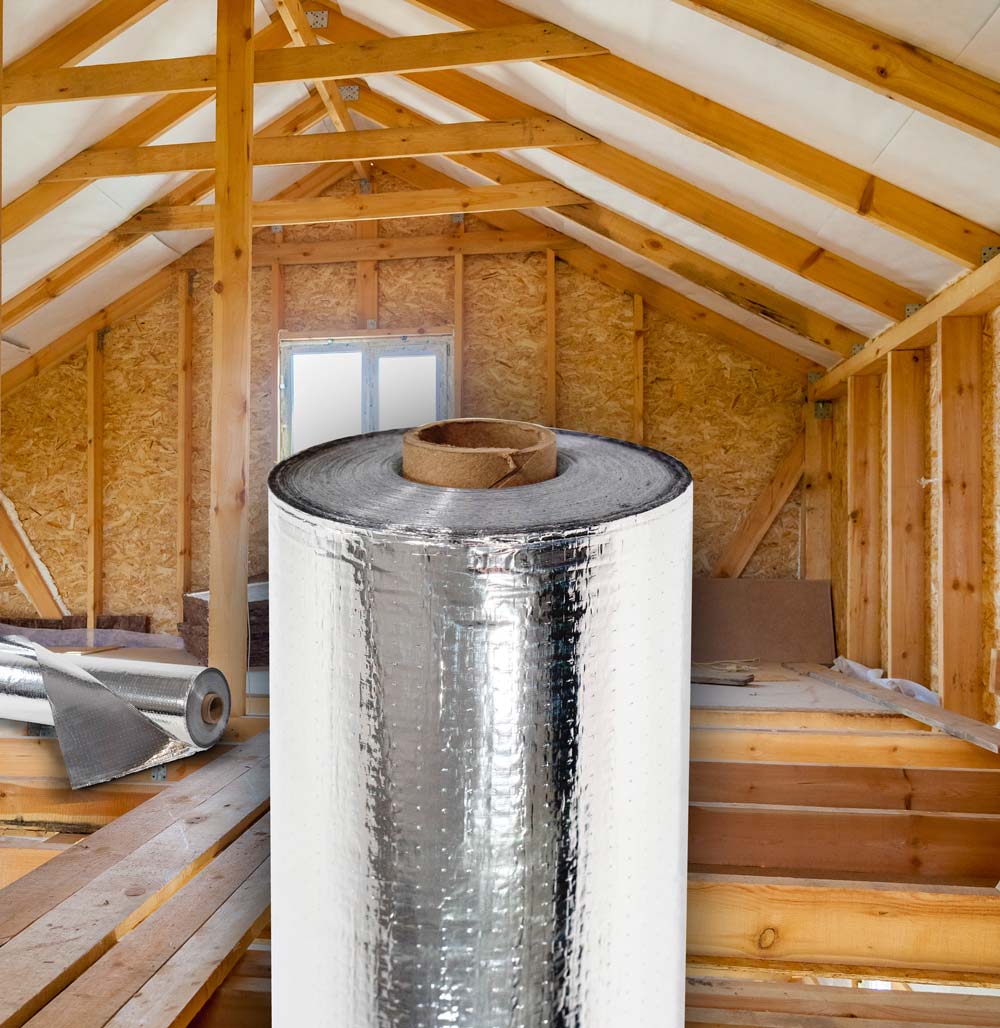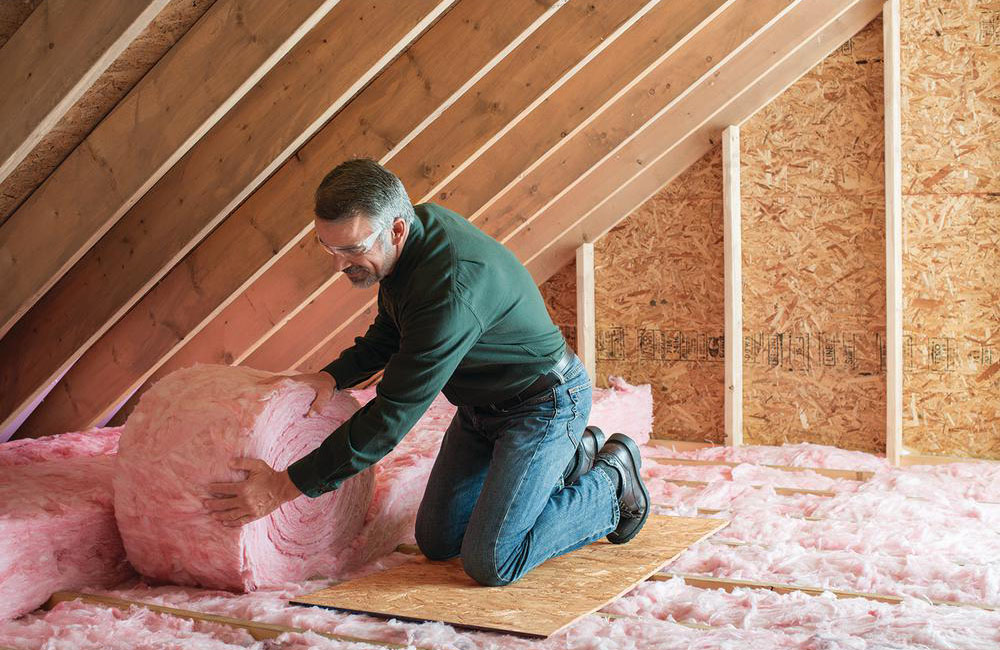Discover the Different Kinds Of Attic Insulation and Their Special Advantages for Your Home's Energy Effectiveness

Fiberglass Insulation
Fiberglass insulation is one of one of the most typically made use of products for attic room insulation because of its excellent thermal performance and cost-effectiveness. Composed of small glass fibers, this material effectively catches air, producing a shielding barrier that aids preserve regular indoor temperature levels. Its high R-value per inch makes it especially reliable at withstanding warm transfer, which is crucial for energy preservation in homes.
Setup of fiberglass insulation is relatively straightforward, often available in batts or loose-fill kinds, suiting different attic room setups. In addition, it is immune and non-combustible to moisture, reducing the danger of mold advancement. This longevity adds to its durability, making fiberglass a feasible long-lasting investment for property owners.
Moreover, fiberglass insulation is usually made from recycled materials, which enhances its eco-friendliness. The material can likewise add to soundproofing, minimizing noise transfer in between areas. While it is vital to wear protective gear during installation to prevent irritation from the fibers, the overall advantages of fiberglass insulation, including energy cost savings and ecological factors to consider, make it a preferred selection for boosting attic efficiency and advertising a comfortable living atmosphere.
Spray Foam Insulation
Spray foam insulation is a very efficient choice for attic room insulation, known for its exceptional air securing and thermal performance. This innovative insulation material is made up of a blend of isocyanate and polyol resin, which, when incorporated, increases rapidly to fill up gaps and dental caries in the attic room area. Its capability to abide by numerous surfaces ensures a constant barrier versus air leakages, dramatically reducing warm loss throughout cooler months and warm gain during warmer seasons.
One of the essential benefits of spray foam insulation is its high R-value per inch, which means it supplies excellent thermal resistance in a relatively slim application. This is specifically useful in attics where space is frequently minimal. Furthermore, spray foam can aid reduce wetness accumulation, lowering the danger of mold and mildew and mildew development, which can be detrimental to both the structure and indoor air top quality.
While the initial cost of spray foam insulation might be greater than conventional choices, its lasting energy financial savings, paired with raised convenience and boosted home worth, make it a worthwhile financial investment for house owners looking for boosted energy efficiency. Attic Insulation DFW. Overall, spray foam insulation sticks out as an efficient service for enhancing attic room insulation
Cellulose Insulation

Cellulose insulation is a prominent option for attic insulation, mainly More Bonuses made up of recycled paper products treated with fire resistants. This eco pleasant option is known for its exceptional thermal performance, effectively reducing warm transfer in both summer season and cold weather. The dense composition of cellulose enables it to fill up spaces and gaps in attic spaces, giving a seamless obstacle versus air leaks.
One of the substantial advantages of cellulose insulation is its capability to stand up to mold and mildew and parasites, owing to the fire retardant therapies utilized throughout production. Furthermore, it flaunts a high R-value per inch, which translates into superior power effectiveness. House owners can expect reduced home heating and wikipedia reference cooling expenses as a result of boosted insulation.
Installment is normally completed via blowing loosened cellulose right into the preferred location, permitting for a quick and efficient procedure. This approach likewise decreases interruption to the existing structure. Additionally, cellulose insulation has a fairly low environmental impact, as its production process uses recycled materials, adding to sustainable building techniques.
Rock Woollen Insulation
Amongst the numerous alternatives for attic insulation, rock woollen, likewise called mineral woollen, stands apart due to its outstanding thermal and acoustic efficiency. Made from natural or recycled products, rock woollen is created by melting rock and spinning it right into fibers, causing an item that supplies excellent insulation homes.
Among the substantial advantages of rock wool insulation is its high R-value, which suggests its effectiveness in withstanding warmth circulation. This characteristic not just enhances power effectiveness but additionally adds to preserving a comfortable interior temperature year-round. In addition, rock wool is inherently fireproof, making it a safer option for homes as it can hold up against high temperature levels without melting or releasing hazardous fumes.
Furthermore, rock wool insulation stands out in soundproofing abilities, effectively lowering sound transmission in between spaces and from outside sources. In general, rock wool insulation provides a comprehensive solution for enhancing power efficiency, security, and convenience in domestic settings.
Glowing Barrier Insulation
Radiant obstacle insulation works as an effective remedy for reducing warm transfer in attic rooms, particularly in warmer environments. This sort of insulation works by showing convected heat away from living rooms, thereby minimizing the quantity of heat that this link goes into a home during heat - Attic Insulation DFW. Normally made up of a highly reflective product, such as light weight aluminum foil, glowing obstacles are mounted in attics, encountering the roof, where they can intercept incoming warmth from the sun
The main benefit of radiant barrier insulation is its ability to reduced cooling expenses. By showing warm as opposed to absorbing it, glowing obstacles can aid maintain a more stable indoor temperature, decreasing the workload on air conditioning systems. This efficiency translates right into lower power costs and increased comfort for house owners.
In addition to energy cost savings, radiant barriers can also contribute to enhanced indoor air quality. By decreasing heat accumulation, they assist reduce humidity levels, which can prevent mold and mildew growth and enhance overall air circulation. When mounted properly, glowing obstacle insulation can be a very useful enhancement to any type of energy-efficient home, making it a worthy consideration for homeowners looking to boost their attic insulation method.
Verdict
In final thought, understanding the different kinds of attic room insulation-- fiberglass, spray foam, cellulose, rock wool, and glowing obstacles-- allows house owners to make informed decisions pertaining to energy efficiency. By selecting the suitable insulation product, significant decreases in power prices can be attained, along with improvements in indoor convenience.

In final thought, understanding the different types of attic insulation-- fiberglass, spray foam, cellulose, rock woollen, and radiant barriers-- makes it possible for house owners to make enlightened decisions relating to power effectiveness.